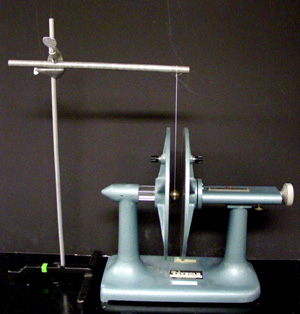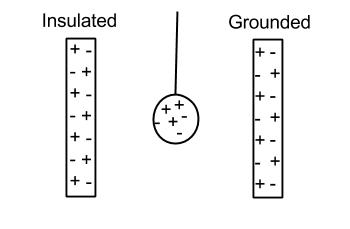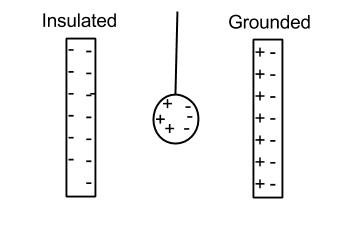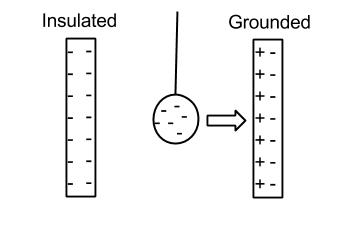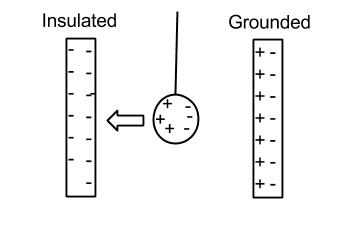In this demonstration, a capacitor is charged and a neutral metal ball is suspended between the two plates. The ball will begin bouncing between the plates, creating a “bell” effect.
The capacitor has a moving and a stationary plate, both 260mm in diameter. The stationary plate is separated from the frame by an insulator, preserving its electric charge. The moving plate is connected to the base, and moves using a micrometer screw. You can adjust the spacing from 0 to 70mm, reading the distance precisely to 0.1mm. The charge, potential, and plate separation can all be varied and measured.
Equipment:
- Large parallel plate capacitor [cabinet F4]
- Van de Graaff generator or other high voltage source [Optics counter]
- Metal ball suspended from a string and a rod to hang the string and ball from(these are kept as a single unit) [cabinet F5 in Van De Graff box]
- Rod and stand
- Right-angle bracket
Demo:
Suspend a metal ball between the two plates of the capacitor by using a right-angle bracket to connect the rod and stand the the rod, string, and ball apparatus. The capacitor has a grounded plate and an insulated plate. The insulated plate can be identified by a clear plastic piece attached(see figure 1).
If using a Van de Graaff generator to charge the capacitor, connect a hot wire from the metal sphere of the generator to the insulated plate, and ground the generator to the grounded plate. For the best connection, wrap the hot wire between the toothed metal washer and the insulated plate and tighten the washer. Now turn the Van de Graaff generator on and charge the capacitor for up to ten seconds. Once the capacitor is charged, turn off the generator and nudge the string suspending the metal ball such that the ball touches the insulated plate.
Once the ball touches the insulated plate, it will begin bouncing between the plates, creating a “bell” effect.
Important: Before handling the Van de Graaff generator or capacitor, discharge the generator by using the smaller grounded metal sphere to touch the larger sphere. Note that because the capacitor is electrically connected to the generator via hot wire, this also discharges the capacitor.
You may also adjust the distance between the plates and observe its effects. The smaller screw closest to the grounded plate locks the plates into place, and the larger screw at the end of the apparatus, also on the grounded side, moves the grounded plate.
Explanation:
Before the capacitor is charged, the metal ball hangs unmoving between the plates and the entire system is electrically neutral(see figure 2).
As we charge the capacitor, the insulated plate accumulates negative charge from the voltage source, and the opposite plate remains neutral because it is grounded.
Charges, whether positive or negative, attract neutral objects. When close to a charged object, say a negatively charged plate, the neutral object’s positive charge will move towards the plate, attracted by the opposite charge, and the neutral object’s negative charge will move away from the plate, repelled by similar charge. This leads to charge alignment. This can be visualized by comparing the grounded plate in figures 2 and 3. In both figures the grounded plates are neutral, however in figure 3 the negatively charged plate attracts the positive charge and repels the negative charge in the grounded plate(and the ball).
The excess charge on the insulated plate and the aligned charge on the grounded plate creates a balance between electric forces and leaves the ball unmoving between the two plates. We nudge to ball to create an imbalance between these forces so that the ball is pulled toward one of the plates.
After nudging the ball towards the negatively charged insulated plate, the contact gives the ball excess negative charge. Like charges repel, so the ball is pushed away from the negatively charged plate by an electric field. The ball is also attracted to the positive charge in the neutral plate.
Once the ball touches the grounded plate, it gives its excess negative charge to the grounded plate and becomes neutral. This excess charge escapes through the ground connection, so the plate also remains neutral. Now the ball experiences charge alignment due to the strong negative charge of the insulated plate, and is attracted to the insulated plate(see figure 5). Note that there is very little difference between the interactions shown in figures 3 and 5. If the ball is left suspended in between the two plates as in figure 3, it will not be inclined to move toward either plate; we gave it a nudge to create an imbalance and get this process started. In figure 5, however, the ball is already in motion. This means that once the ball is slightly closer to the insulated plate than the grounded one, it will accelerate toward the insulated plate.
Once again, the ball will contact the insulated plate and acquire excess negative charge, and this process will repeat until the insulated plate loses most of its excess charge.
Notes:
After finishing this demonstration, use the discharge sphere to discharge the Van de Graaff generator and prevent electric shock. Do not touch the Van de Graff sphere or the insulated plate while charged.
There is still some speculation on some of the interactions described above in the explanation section. Please send any corrections or suggestions to ssholtz@ucsc.edu.
Written by Lydia Seymour
